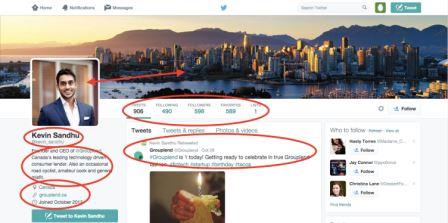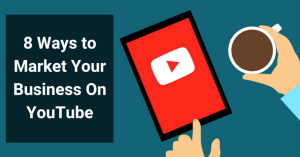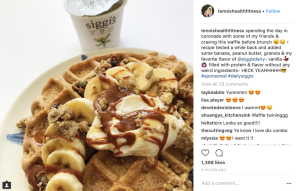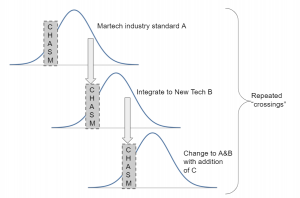
Fit can be everything.
The right shoe, the right house, the right lifestyle. Finding what fits and how it can work for you can mean the difference between failure and success. This life principle also happens to be one of the key components to influencer marketing.
Finding who will work for your brand and fit into your guidelines and expectations is an art that anyone can learn. All you have to know is what to look for and how to see it.
I’ll walk you through some of the signals and red flags to look for in potential influencers. You’ll discover the breakdown of some key identifiers that will help you spot a quality influencer more easily for your next marketing outreach campaign.
First Impressions
Based on first impressions, a website visitor can decipher an influencer’s persona within the first 10 seconds. In this time, people should be able to determine an influencer’s target market, topic or industry without difficulty.
The clues to look for can be found in an influencer’s bio, profile, or cover photo, the title of their videos, or the types of photos that they upload. The most detailed and obvious information is in the actual content that they produce – posts, blogs, statuses, tweets, etc.
Being recognized as an influencer in a first impression is what makes audience members stick around. People are more likely to dedicate themselves to or follow an influencer if they can detect what kind of audience they appeal to and if that is an audience they want to be included in.
Multiple Platforms
Social media trends show that 74% of consumers rely on influencers to inform their purchasing decisions. New consumers look for user-generated content on social networks to inform them of trends, products, and new exciting entrants to the market. Having the following and support of the public is what keeps influencers in business. These influencers work to spread their “influence” across multiple platforms to effectively inform the masses.
Many influencers create a brand subsequent of their blog or influence, where they communicate using visuals, written pieces, and even contests. By spreading across several platforms, an influencer increases their odds of building a larger audience. That being said, most influencers tend to focus on one primary social platform. This is usually their initial account, or first to gain a substantial following; or the most appropriate platform to relay their content.
We find that audiences often find their next favourite blogger by stumbling upon an influencer’s Facebook Page even though it may not be their primary social platform. This is generally a way for bloggers to self-promote their content, similar to how consumer brands use social media to personalize their brand.
Audience members sometimes will show favour to one social platform over another, dedicating the bulk of their time to one social account and ignoring the rest. If an influencer has a restricted number of platforms, the chances of attracting a significant number of new audience members is limited. Influencers who only have one social platform miss out on the opportunity of drawing in potential audience members who use different platforms for different purposes.
Quality vs Quantity of Followers
As Jayson DeMers outlined for Forbes, “the truth is, the number of followers you have is nowhere near as important as the type of followers.” He continued to say that it is only a small percentage of the entirety of social media users that are very active, boast large & engaged networks, and can be viewed as influential over other users.
Without a doubt, engaged followers can drive actionable insight. And brands should further examine an influencer’s engagement within their network. But regardless of how good an influencer’s content is, or how engaged their followers are, your brand message won’t be amplified if the influencer only has 200 followers.
In the most obvious sense, we can assume that with an increased following there will be a subsequent increase in reach or impression. And if they are producing high-quality content, the chances that a follower will engage with the content is increased as well, aiding in brand exposure and driving a call to action.
Quality vs quantity is a common debate – I’ve seen it everywhere. But why does it have to be one or the other? Both are crucial, and each influencer should strive to achieve a balance when growing their social presence.
Consistency
Consistency comes in two forms, the first being the consistency of an influencer’s topic, the second being the influencer’s content distribution frequency.
Topics are what the influencer’s content revolves around, which relates to the category or industry that envelopes that topic. For example, an influencer’s topic might be about the latest iOS software updates, thus the category or industry that fits the influencer would be “technology.” A true influencer sticks to and rarely deviates from what they talk about on a regular basis.
For example, it is unlikely that an influencer on Twitter who talks about homemade tattoo removal ointments will randomly begin discussions about the ancient history of origami one day. If an influencer lacks topic consistency, their audience’s dependency and expectations will begin to fade.
Consistency also relates to an influencer’s content distribution frequency. The frequency of posts, or any type of sharable content, is very important to audience members. Audiences rely on influencers to deliver content on a predictable frequency and they expect influencers to be consistent with their posts. No matter if it’s one post every month (or every day) audience members expect influencers to stick to a “posting schedule.”
A posting schedule is not something that is written down or set in stone, but rather something that audience members know as routine. Ideal influencers are the ones who seldom break this routine.
Authenticity
Authenticity, which is vital to being an influencer, is also broken down into two parts: authenticity of an influencer themselves and the authenticity of the influencer’s audience.
Influencers are not attention seekers. Their audience size should grow organically over time by providing quality content, which covers a topic that they are genuinely passionate about. An influencer doesn’t necessarily have to be an expert within a field, category, or industry. They are, however, expected to be sincerely interested in the topic that they continually talk about on their social platform.
The second part, which relates to the authenticity of an influencer’s audience is of equal importance. When audience engagement exists, the authenticity of an influencer is validated. This manifests itself via audience members commenting, retweeting, liking, and sharing the influencer’s content.
Fake audience members are another thing to consider when assessing the authenticity of an influencer. Take Twitter for example; if an influencer has a suspiciously large audience size, it may be worth investigating whether that influencer’s audience is authentic. Fake audiences can be redundant to the time and money that goes into an influencer outreach campaign. If a brand chooses to pay a specific amount to an influencer in hopes of amplifying their content to the influencer’s displayed following, and an unacceptable percentage of the following are “bots,” the brand has spent money on lost amplifications, that do not reach human eyes or accounts.
The entire concept of influence is lost in this process if not examined prior to the commencement of a campaign.
Fake Audience Member example:

Source: Twitter
This is a Twitter account that was grabbed from the following list of an influencer. Upon further investigation, evidence suggested that this influencer may not have an authentic audience and your brand message could be wasted on profiles like this. What you see above is a textbook example of a bot. Some of the red flags in the account above that helped us determine whether this account was a bot are as follows:
- No profile picture or cover photo: In the example we see an egg, which is the default image if no profile picture has been uploaded. There also is no cover photo.
- No Bio: “vinod” doesn’t seem to have a bio.
- Questionable profile name: “vinod” may or may not be a person’s name (it’s not even capitalized).
- Odd Twitter handle: @9952665151vinod is a bit bizarre.
- Number of Followers: they only have 8 followers which raises concern, even if he is classified as an “audience member.”
- No meaningful updates on their feed: This person only has updates regarding the people he or she has recently followed (nothing of their own content).
Authentic Audience Member example:

Source: Twitter
This is a Twitter account that was grabbed from the following list of an influencer. Here are the signs that helped me distinguish that this is an authentic audience member:
- Profile picture and Cover photo: a professional headshot for his profile picture and a nice scenic cover photo.
- First/Last Name: Kevin Sandhu sounds like a legitimate first and last name.
- Bio: Kevin has a short description about himself.
- Location: Kevin is from Canada.
- Website: Kevin provides a link to his the business that he runs.
- Number of Followers: Kevin shows a good balance between following and followers, along with Tweets, Favourites and Lists.
- Twitter feed updates: Kevin’s most recent update was a retweet, meaning he is sharing an influencer’s content that he finds important enough to share on his own account. This is a prime example of audience engagement.
Having a few “fake” followers may not be something an influencer can control. Just because they have a few fake accounts does not necessarily mean that they were bought. It’s easy for bots to scam the Internet and land on an influencer’s following list. Use your judgement and take a look at the ratio of authentic to fake followers.
Conclusion:
All of these points are universal and generic when spotting an influencer. These aren’t the set rules, but merely suggestive guidelines to identify influencers more efficiently and effectively.
If multiple social platforms are used, audience quality and quantity are well-balanced, first impressions are clear, and content and audience authenticity is evident, it’s probably safe to say that you have a high calibre influencer in your hands.
Looking for more guidance in selecting your influencer? Check out our 4 Elements of Influencer Vetting post.
Digital & Social Articles on Business 2 Community(61)






